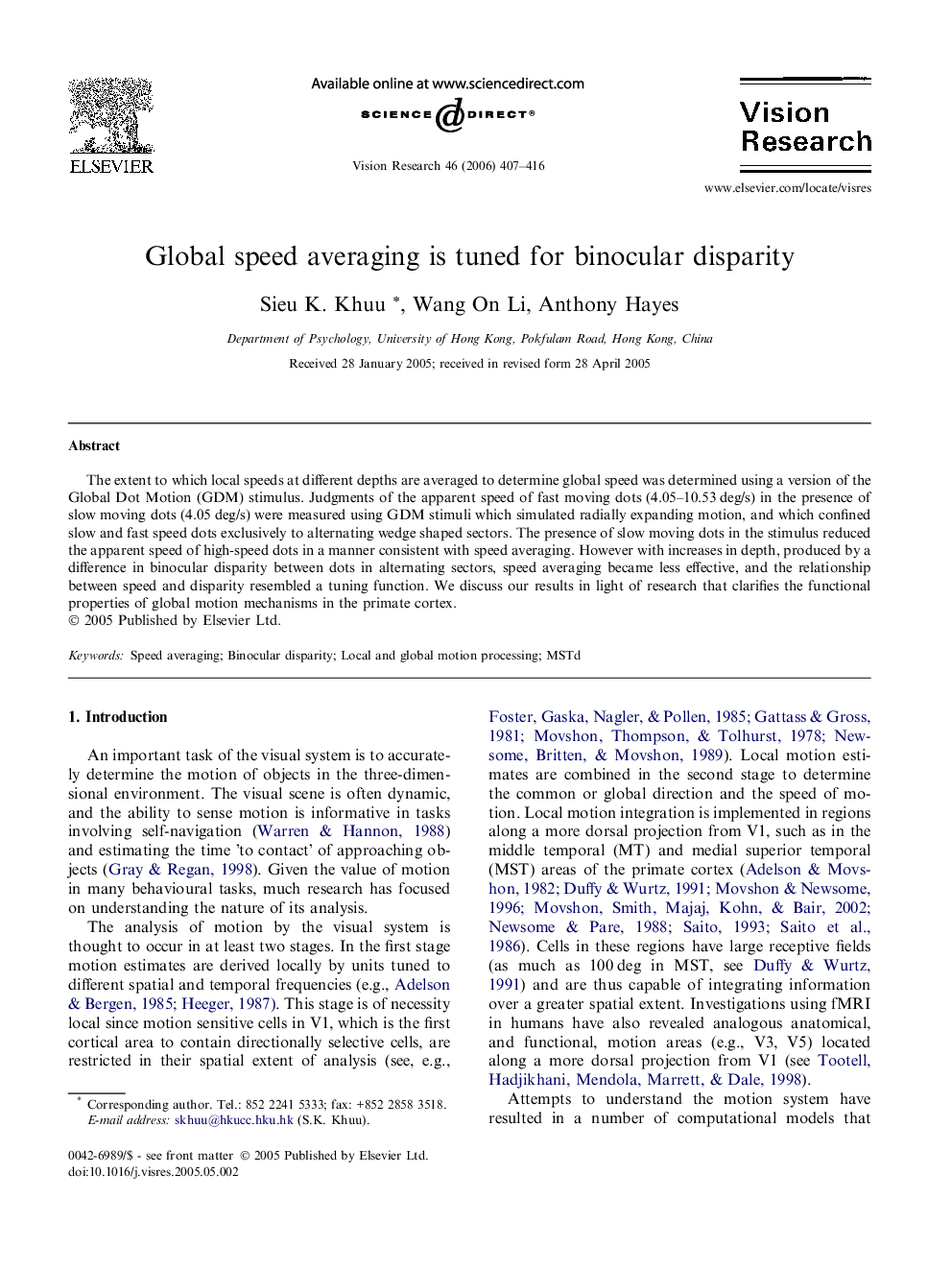| Article ID | Journal | Published Year | Pages | File Type |
|---|---|---|---|---|
| 4035387 | Vision Research | 2006 | 10 Pages |
The extent to which local speeds at different depths are averaged to determine global speed was determined using a version of the Global Dot Motion (GDM) stimulus. Judgments of the apparent speed of fast moving dots (4.05–10.53 deg/s) in the presence of slow moving dots (4.05 deg/s) were measured using GDM stimuli which simulated radially expanding motion, and which confined slow and fast speed dots exclusively to alternating wedge shaped sectors. The presence of slow moving dots in the stimulus reduced the apparent speed of high-speed dots in a manner consistent with speed averaging. However with increases in depth, produced by a difference in binocular disparity between dots in alternating sectors, speed averaging became less effective, and the relationship between speed and disparity resembled a tuning function. We discuss our results in light of research that clarifies the functional properties of global motion mechanisms in the primate cortex.
